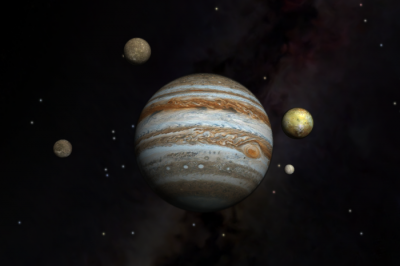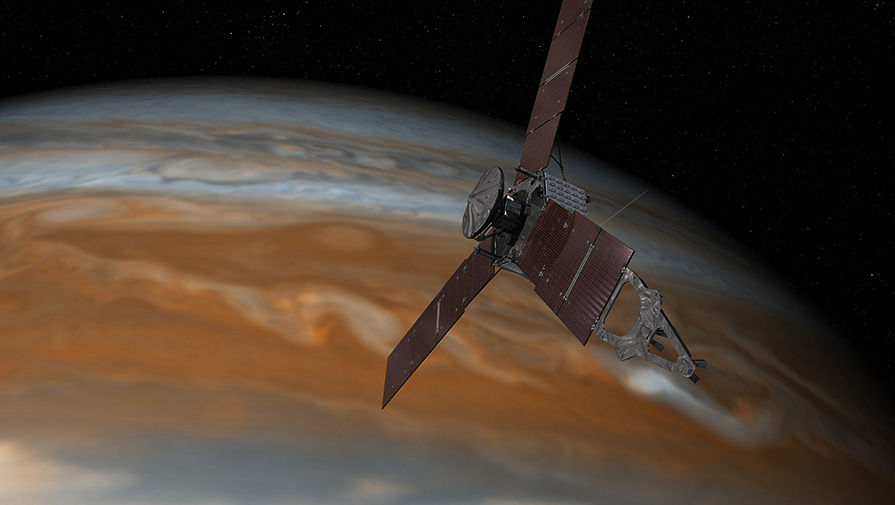The great Red spot on Jupiter red-hot red-hot. The highest temperature in the gas giant recently recorded in the area of the atmosphere over this huge storm.
The great Red spot — a very large storm, whose diameter is two times the size of Earth, located in the lowest layer of the atmosphere of Jupiter. At an altitude of 800 km over this monstrous storm, astronomers measured the temperature of 370 degrees Celsius above normal for the gas giant.

Jupiter and Ganymede. The great Red spot was in the frame. © NASA
A new study will help unravel the mystery of unusually high temperatures, which is observed in the upper atmosphere of Jupiter. And cannot be explained only by heating of the Sun.
The average atmospheric temperature on Jupiter is approximately 930 degrees Celsius, with the exception of the regions above the poles of the planet, heat up auroras. Above the Great Red spot temperature reaches about 1330 degrees.
Previous models of heat distribution assumed that the Jupiter atmosphere is much colder, because Jupiter is 5 times farther from the Sun than the Earth. Therefore, the researchers surmised that, in addition to solar heat, the heated atmosphere of the gravitational and acoustic waves which are formed due to turbulence in the atmosphere under the Big Red spot.
Atmospheric gravity waves should not be confused with just gravity waves. They appear when the “pockets” of air collide with objects such as mountains. The effect is a result similar to when pebbles are thrown into the water, and on water there are circles.
Acoustic waves, on the other hand, sound waves. They develop from compression and refraction of air and ascend into the atmosphere. Where the waves meet with areas of low density and break like ocean waves breaking on the shore. When this happens, the acoustic waves produce the accumulated kinetic energy and make the molecules and atoms in the air to move more, which and fever.
While the spacecraft “Juno” revolves around Jupiter, the researchers hope to obtain photographs of the Great red spot close-up and to identify areas where the heat in the upper atmosphere of the planet. The researchers also plan to study the fine details of smaller storms, such as a Small Red spot to see if heats up the atmosphere above them.







